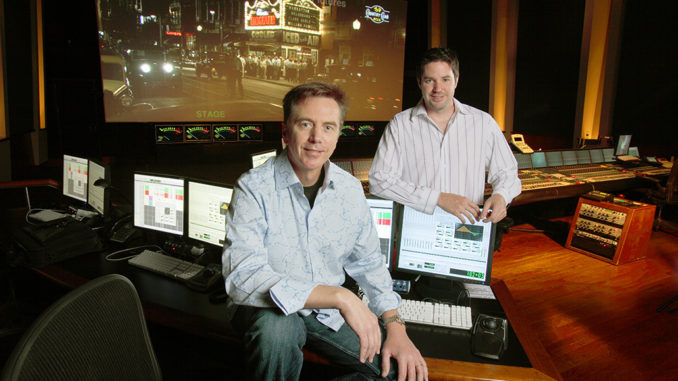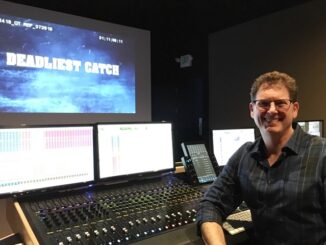
by Debra Kaufman
Re-recording mixers Kevin O’Connell and partner Beau Borders have been working tirelessly since last October on mixing Michael Mann’s period gangster crime drama Public Enemies, due in theatres July 1 from Universal Pictures. During that time, which included sessions conducted in the mixing facilities of Warner Bros. Studios and Twentieth Century Fox Studios, Mann’s passion for detail and authenticity has been the hallmark of the film’s sonic nuances, according to O’Connell.
“The supervising sound editors, Laurent Kossayan and Jeremy Peirson, went to great lengths to come up with the correct automobile and all kinds of authentic period firearm sounds,” reports O’Connell. “One day I remember they brought in the set armorer to the studio with all of the guns used in the movie. They hung mics up and down the streets of Warner Bros., around the corners and even from the tops of buildings so they could get the sound from every perspective with real reverberance and delay.” Borders then blended the re-recorded guns with the actual guns fired on location.
Both mixers say that director Mann’s close reading of dialogue makes Public Enemies sonically different from most movies. “Most directors work in more general terms: Raise the music here and lower the dialogue there,” says O’Connell. “Michael is so specific that he works in terms of vowels and consonants. If the line is ‘Marty, tell me my boys are safe in Chicago,’ he would tell me that the ‘m’ in Marty needs to be up one decibel, but by the time we get to the ‘y,’ it needs to be down one decibel; the word ‘boys’ needs to be up two decibels; the word ‘safe’ needs to play flat and ‘in Chicago’ should be minus one-and-one-half decibels.”
“What Michael has taught me is that it’s not all about having a big, loud sound, with everything cool and clean and big, He’s taught me that if what you’re doing isn’t helping to tell the story, you’re doing something wrong.” – Beau Borders
That’s a lot of moves in a short period of time, but O’Connell says the results are stunning. “Michael enhances performances this way and it really works,” he says. “You don’t realize it when you’re mixing it, but when we sit back and watch the entire movie, we realize he gave the performances a little more or less power depending on his intent.” The director’s working style is also unique. “Michael knows exactly what he wants his movies to sound like, and he has the technical knowledge in terms of decibels, fader levels and equalization to back that up,” explains O’Connell, who says that Mann also watches the movie every morning before he comes onto the mixing stage and faxes over sound notes on what he wants to work on that day.
Borders notes that Mann makes a point to integrate his work in the cutting room, digital intermediate suite and mixing bay. “Take a scene in a jail cell,” he says. “In color correction, he’ll de-saturate it and make it feel stark and cold. Then he comes to us and does the same thing. He doesn’t want the sound of the jail door to be big and bass-y; he wants it thin and brittle and cold.
“What Michael has taught me is that it’s not all about having a big, loud sound, with everything cool and clean and big,” Borders continues. “He’s taught me that if what you’re doing isn’t helping to tell the story, you’re doing something wrong.”
O’Connell describes how Mann would want a dialogue scene to be extremely low. “You’d wonder what was wrong,” he says. “But he is mixing it that low for a reason that will reveal itself one minute or five minutes or 20 minutes later. He’s luring you into a false sense of security—and then all hell breaks loose and it really shocks the heck out of you. You may not understand it at the moment, but when heard within the context of the movie, you soon realize it all makes sense.”
And nobody does that better than Mann, according to O’Connell. “He is one of the most talented and detailed directors I’ve ever worked with,” he concludes. “I have mixed many movies in the last 27 years and I’ve never learned more about mixing on a movie than I have on Public Enemies––and that’s because of Michael Mann.”
Debra Kaufman has been writing about film/TV technology and business for 25 years, for publications including The Hollywood Reporter, Variety and Wired. She also authors the MobilizedTV.com blog. Reach her at dkla99@verizon.net.






